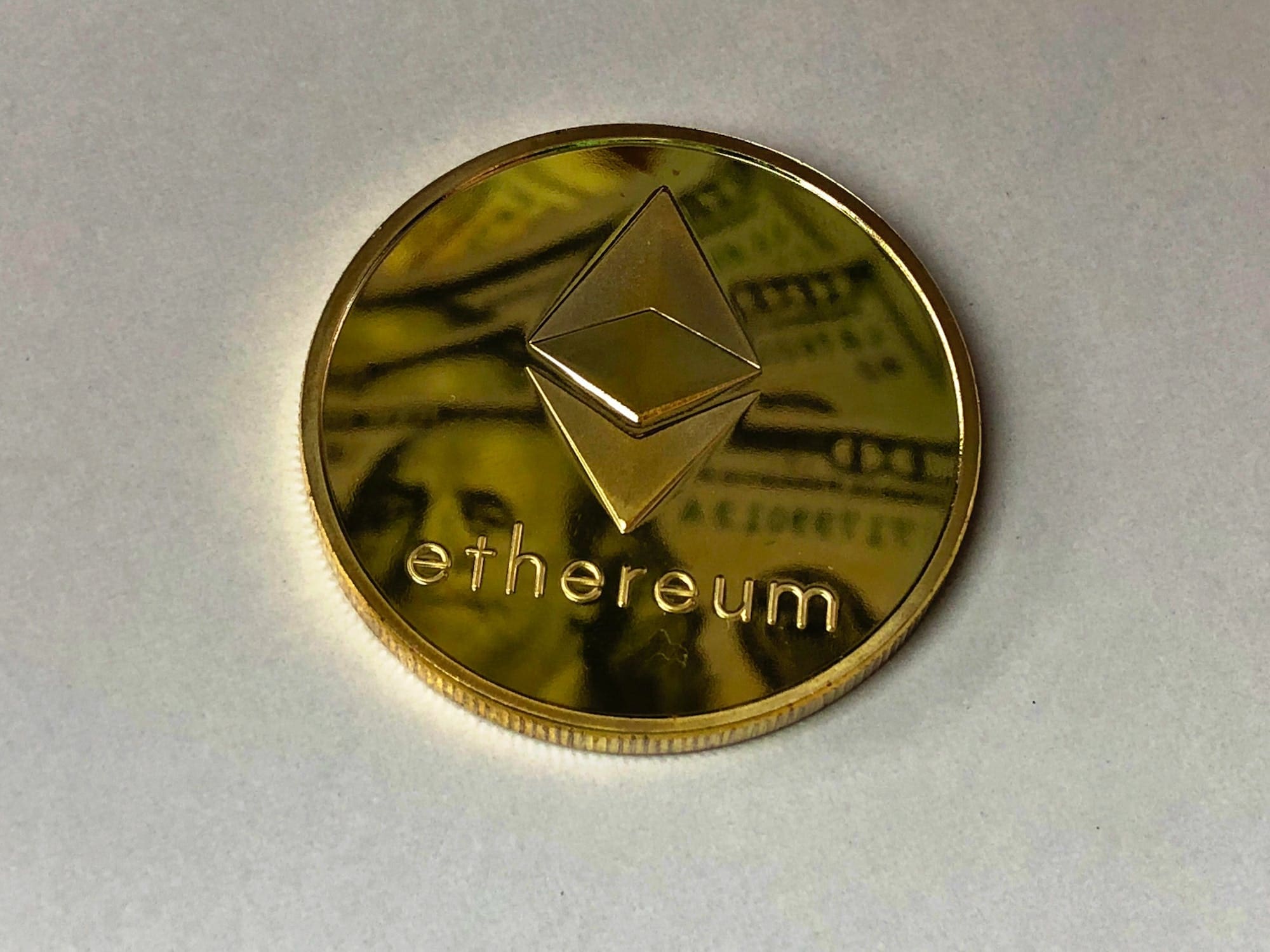What Is Ethereum in Basic Terms & How Does It Relate to the Wider Crypto Ecosystem?
A series exploring Ethereum, it's history, future and relation to the wider crypto ecosystemIntroduction to Ethereum
Ethereum, often hailed as the world’s second-largest cryptocurrency, is more than just a digital asset. It’s a decentralised, open source blockchain platform that has revolutionised the world of digital currencies and beyond.
This article is part of the below series on Ethereum and will explore questions such as “What is Ethereum”, “How does it relate to the wider crypto ecosystem”, and more.
- The Rise of Ethereum: A Comprehensive Guide to the World’s Second-Largest Cryptocurrency
- A Timeline & History of Ethereum: From Inception to Ethereum 2.0
- What Is Ethereum in Basic Terms & How Does It Relate to the Wider Crypto Ecosystem
- The A-Z of Ethereum Forks: From the DAO Hack to Ethereum Classic and Beyond
- Ethereum vs Bitcoin: A Comparative Analysis of the Top Two Cryptocurrencies
- Understanding Ethereum’s Smart Contracts and Decentralized Applications (DApps)
- Exploring the Use Cases and Real-World Applications of Ethereum
- The Beacon Chain and The Merge: Ethereum’s Roadmap to Proof-of-Stake
- The Future of Ethereum: An In-Depth Look at Ethereum 2.0 and Beyond
What Is Ethereum?
In answer to “What is Ethereum”, it is a blockchain-based platform that enables developers to build and deploy decentralized applications (DApps) – meaning they are not run by a centralised authority.

What is Ethereum – Image credit: Pexels/David McBee
In its most simple terms, Ethereum is a platform that anyone can use to create secure decentralised digital technologies. The platform is powered by Ethereum’s native cryptocurrency, called Ether (ETH) and the token is designed to pay for work done supporting the blockchain, but participants can also use it to pay for tangible goods and services where accepted in the same way as Bitcoin and other cryptocurrencies.
Ethereum is mainly known for its unique feature – smart contracts. These self-executing contracts have the terms of the agreement directly written into lines of code. Ethereum’s ability to facilitate smart contracts opens up a world of possibilities for innovation and new use cases, making it a significant player in the crypto ecosystem.
Designed to be scalable, programmable, secure, and decentralised, Ethereum is often the blockchain of choice for developers and enterprises looking to take advantage of these features.
Is Ethereum the Same as ETH and Ether?
While the terms Ethereum, ETH, and Ether are often used interchangeably, they refer to different aspects of the same ecosystem:
- Ethereum is the blockchain platform itself
- Ether is the native cryptocurrency that powers the Ethereum network and is used to pay for transactions and computational services on the Ethereum network.
- ETH is the ticker symbol for Ether (used to identify and exchange the Ether cryptocurrency)
What Is the Ethereum Blockchain?
Ethereum, like other cryptocurrencies, involves blockchain technology. A blockchain is a database of transactions that is updated and shared across many computers in a network.
Every time a new set of transactions is added, it’s called a “block” – hence the name blockchain. Most blockchains are public, and you can only add data, not remove it. If someone wanted to alter any of the information or cheat the system, they’d need to do so on the majority of computers on the network.

Ethereum blockchain – Image credit: Pixabay/Geralt
This makes established blockchains like Ethereum highly secure. In the case of the Ethereum blockchain, this is a decentralised ledger that records all transactions and smart contract executions on the Ethereum network. This blockchain is maintained by a network of computers, known as nodes, that validate and record these transactions.
The Ethereum blockchain is known for its security, transparency, and immutability, making it a reliable platform for various applications.
How Does Ethereum Work?
Up until The Merge, Ethereum operated on a consensus mechanism called proof-of-work (PoW), similar to Bitcoin.
With its transition to Ethereum 2.0, it now operates using proof-of-stake (PoS), which is explained in detail in our article titled “The Beacon Chain and The Merge: Ethereum’s Roadmap to Proof-of-Stake“.
The transition essentially replaced miners with validators, who will secure the network by staking their Ether as collateral.
Ethereum and Crypto Mining
While Ethereum has now transitioned the PoS consensus mechanism, it’s important to note that Ethereum’s history is deeply intertwined with crypto mining.
In the PoW era, miners use powerful GPUs to solve complex mathematical problems, thereby securing the network and earning ETH as a reward. This process was energy-intensive and led to the creation of large mining farms, often equipped with specialised GPU mining rigs.
While Ethereum no longer relies on traditional mining, the impact of mining on Ethereum’s development cannot be understated. It was the miners who provided the security for the Ethereum network in its early stages, and many of the principles of decentralisation and consensus that were developed in this period still apply in the PoS era.
It’s worth noting that Ethereum Classic (ETC) along with more recent forks such as Ethereum Fair (ETHF) and Etherem PoW (ETHW), which we will discuss in later articles, all continue to operate under the PoW consensus mechanism. Staying true to Ethereum’s origins in traditional crypto mining, these forks all compete to be the best decentralised PoW version of Ethereum.
What Are Layer 2 Ethereum Tokens?
Layer 2 solutions are secondary protocols built on the Ethereum blockchain to increase scalability and efficiency. These solutions aim to address the high gas fees and slow transaction times associated with the Ethereum network.
Layer 2 tokens operate on these layer 2 solutions, allowing for faster and cheaper transactions while maintaining the security and decentralization of the Ethereum network.
Ethereum Tokens and ERC-20
Ethereum has become a popular platform for the creation and deployment of new tokens. The most common token standard on Ethereum is the ERC-20 standard, which defines a set of rules and functions for creating fungible tokens.
Many popular tokens, such as Tether (USDT) and Chainlink (LINK), are built on the Ethereum blockchain using the ERC-20 standard. These tokens enable various functionalities, such as decentralized finance (DeFi) and non-fungible tokens (NFTs).
Gas Fees
Gas fees are a crucial aspect of the Ethereum network. Gas fees represent the computational power required to execute transactions and smart contracts on the Ethereum blockchain.
Users need to pay gas fees in Ether to incentivise validators to include their transactions in the blockchain. These gas fees can vary depending on network congestion and the complexity of the transaction or smart contract, which has led to complaints over the high costs associated with them at times.
Ethereum vs Other Cryptocurrencies
While Bitcoin is the most well-known cryptocurrency, Ethereum offers unique features and advantages. Whilst being the two largest cryptocurrencies, they are actually very different to each other and provide entirely unique use cases.
Unlike Bitcoin, which primarily focuses on being a digital currency, Ethereum provides a platform for building decentralised applications and executing smart contracts. Ethereum’s programmability and flexibility have made it a preferred choice for developers and businesses looking to leverage blockchain technology.
There are of course other cryptocurrencies that are more similar to Ethereum such as Cardano, Binance Smart Chain, Solana, and Polkadot, but we will explore these in a later article.
The Ethereum Ecosystem
The Ethereum ecosystem extends beyond its blockchain platform. Ethereum has facilitated the development of various decentralized apps (DApps) and has become a prominent player in the decentralized finance (DeFi) space.
DeFi apps built on Ethereum enable users to access financial services such as lending, borrowing, and trading without intermediaries. Additionally, Ethereum has paved the way for the creation and exchange of non-fungible tokens (NFTs), which represent ownership of unique digital assets.
Ethereum’s Impact on the Wider Crypto Ecosystem
Ethereum’s introduction of smart contracts and DApps has had a significant impact on the wider crypto ecosystem. Ethereum’s success has inspired the development of numerous other blockchain projects and cryptocurrencies.

Ethereum and the wider crypto ecosystem – Image credit: Pixabay/Geralt
These projects often leverage similar concepts and technologies to Ethereum, such as smart contracts and decentralised apps. Some notable examples include Cardano, which aims to provide a more secure and scalable platform for smart contracts, and Polkadot, which focuses on interoperability between different blockchains.
Ethereum’s open source nature has also fostered collaboration and innovation within the crypto community, driving the advancement of blockchain technology as a whole.
Conclusion
Hopefully, this introduction to Ethereum has successfully clarified questions such as “What is Ethereum” and “How does it relate to the wider crypto ecosystem”.
Ethereum has obviously played a pivotal role in the evolution of the crypto ecosystem. Its innovative use of blockchain technology, Ether cryptocurrency, smart contracts, decentralised apps, and new innovative use cases has made it a platform for a wide range of applications, from finance to gaming.
As Ethereum continues to evolve beyond the Ethereum 2.0 upgrade, its impact on the wider crypto ecosystem is expected to grow, shaping the future of blockchain technology and decentralised finance as a whole.
Please let us know if this article introducing Ethereum has been helpful by leaving a comment or joining us on social media.
Last modified on: April 18, 2025
Latest Posts

GPU Mining, ASICs & Decentralisation Explained
IntroductionMining cryptocurrency has become a popular way to participate in the crypto and blockchain space while...

Basic Economics & Cryptocurrency Valuation
Why I've Written This Article? One of the most common, and most frustrating, objections (misconceptions) that I hear...

About CryptosRUs and Into the Cryptoverse
This post exploring CryptosRUs vs Into the Cryptoverse for free crypto advice is a little different to others we...

From Everyday People & General Adoption to the Bitcoin Elites: Who Will Benefit the Most?
IntroductionOn 6th September 2023, we published a massive article titled ‘Detailed Analysis of Projected Bitcoin...
Contact us to order your crypto mining rig today
Address
Opace Ltd t/a Crypto Mining Solutions, Park House, Bristol Rd South, Rubery, Birmingham, West Midlands, B45 9AH. UK
Phone
0845 017 7661

I dont understand all this crypto talk, can someone explain Ethereum like Im 5?
Think of Ethereum as a network that everyone can use at the same time, where you can play games, trade stickers, use money that works only on that network, and make rules that everyone must follow. Or another analogy, think of Ethereum as a big lego set where you can build anything you want and share them with others who can also add their own lego pieces to make it even better…
Ethereum deserves it’s place as the worlds no 2 crypto but they should never have moved to pos. All theyve done is make it more centralised and take power away from the miners
Ethereum’s move to PoS has definitely been a contentious subject in the world of crypto. The goal to become more energy-efficient is admirable, but agreed, it’s also caused concerns about centralisation, particularly how it impacts miners.